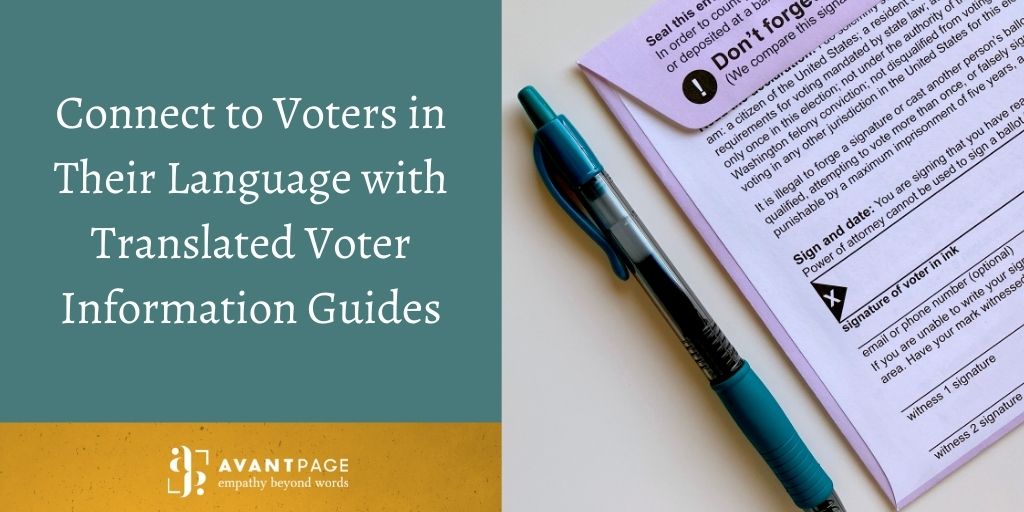A special election for the recall of California Gov. Gavin Newsom is set for September 14, 2021. The last time this happened in California was in 2003 when Gov. Gray Davis was recalled and replaced by Arnold Schwarzenegger. When an election occurs, there are strict requirements for what and how content needs to be delivered to voters so that they can become informed and prepared to vote. The California Secretary of State’s elections office produces a statewide Voter Information Guide (VIG), which must be translated for LEP voters into nine threshold languages: Spanish, Chinese, Vietnamese, Tagalog, Korean, Khmer, Hindi, Thai, and Japanese.
We were recently awarded the project of translating the Voter Information Guide for the upcoming recall election. What’s more, we also translated the VIG for the 2003 recall election. Since then, we’ve translated 14 VIGs for five primaries, six general elections, and three special elections (the 14th being the September 2021 special election).
A lot has changed since 2003, but one thing that hasn’t changed is our ability to deliver the translated versions of the VIG, despite the challenges that come along with it each time. These challenges include very tight turnaround times, complex formatting, and word counts of around 150,000 English source words.
Avantpage was formed to help immigrants and to work with local and state government agencies that serve them, so this type of work is right up our alley. As our chief executive officer, Luis Miguel, explained, “Our commitment to enable immigrants to participate in our democratic process remains as strong now as it was in 2003. We’re honored to be able to continue to serve our immigrant population.”
In preparation for this special election, we’ll share what it takes to translate a VIG for the state of California, and we’ll also look back at how things have changed since that 2003 election.
It Takes a Village
As the saying goes, it takes a village. And it definitely takes a village to translate a VIG into nine languages with a very tight turnaround time. Here’s an example: we translated the Voter Information Guide for the presidential election in November of 2020. This 112-page guide contained 66,400 words with 12 propositions, along with an accompanying TOPL (Text of Proposed Laws) publication of 96 pages and 69,300 words. We had 27 days to translate and format it into the nine required languages. To complete this project, we worked with:
- 55 linguists
- 11 layout proofers
- 15 graphic designers
- 15 project managers and coordinators
We worked around the clock to deliver this important document for our LEP voters.
Proofing and Publishing
The actual translation of the content is just one part of the overall translation process. Proofing that content is another major step. Since the translated version must look identical to the English,
this visual proofing is a critical, detailed-oriented, and time-consuming part of the process. Here are just a few examples of the types of things that we must proof:
- If a document includes graphics, such as the stars that appear on the front cover of a VIG, the graphics must be identical in all versions. With different fonts per language, this requires careful attention and adjustment in the final stages of the project.
- The font size and white space must be consistent across each page in each language. We compare each language side by side to make sure the layout is consistent.
- A TOPL (Text of Proposed Laws) publication has a section for each proposition on the ballot. We have to make sure that the page tabs, such as “Proposition 16” and “Proposition 16 cont’d,” accurately reflect the flow of the text. Since each language varies in length, we must review each tab and page manually.
As you can see, the proofing step also takes a village of detail-oriented language experts to produce the final VIG for print.
A Look Back to 2003
Back in 2003, when we worked on the special election VIG, we certainly didn’t have the team that we just described. In fact, our CEO, Luis, did the bulk of the work from his garage, along with two part-time UC Davis students doing project management and proofing, and one part-time bookkeeper. In 2003, just six languages were required.

Fast-forward to today: we have 35 full-time employees, in three main offices, with dedicated areas of Operations, Business Development, People Operations, and Systems. We’ve grown from annual revenue of $500,000 to $5M today. And as we mentioned earlier, we’re now on our 14th VIG project with a total of nine languages.
Luis stated, “The combination of people, process and technology to provide quality language services to CA government serving immigrants was the basis of our success then, and remains so today. We welcome the opportunity to serve our LEP population in this capacity.”
In Conclusion
As a company based in California providing government translation services, we understand what it takes to meet the requirements of the LEP population for elections. We can scale up our dedicated teams to accommodate these types of projects without affecting our other client work.
How can we help you increase voter engagement? Reach out to us to learn more. We’re happy to provide you with a free quote.
